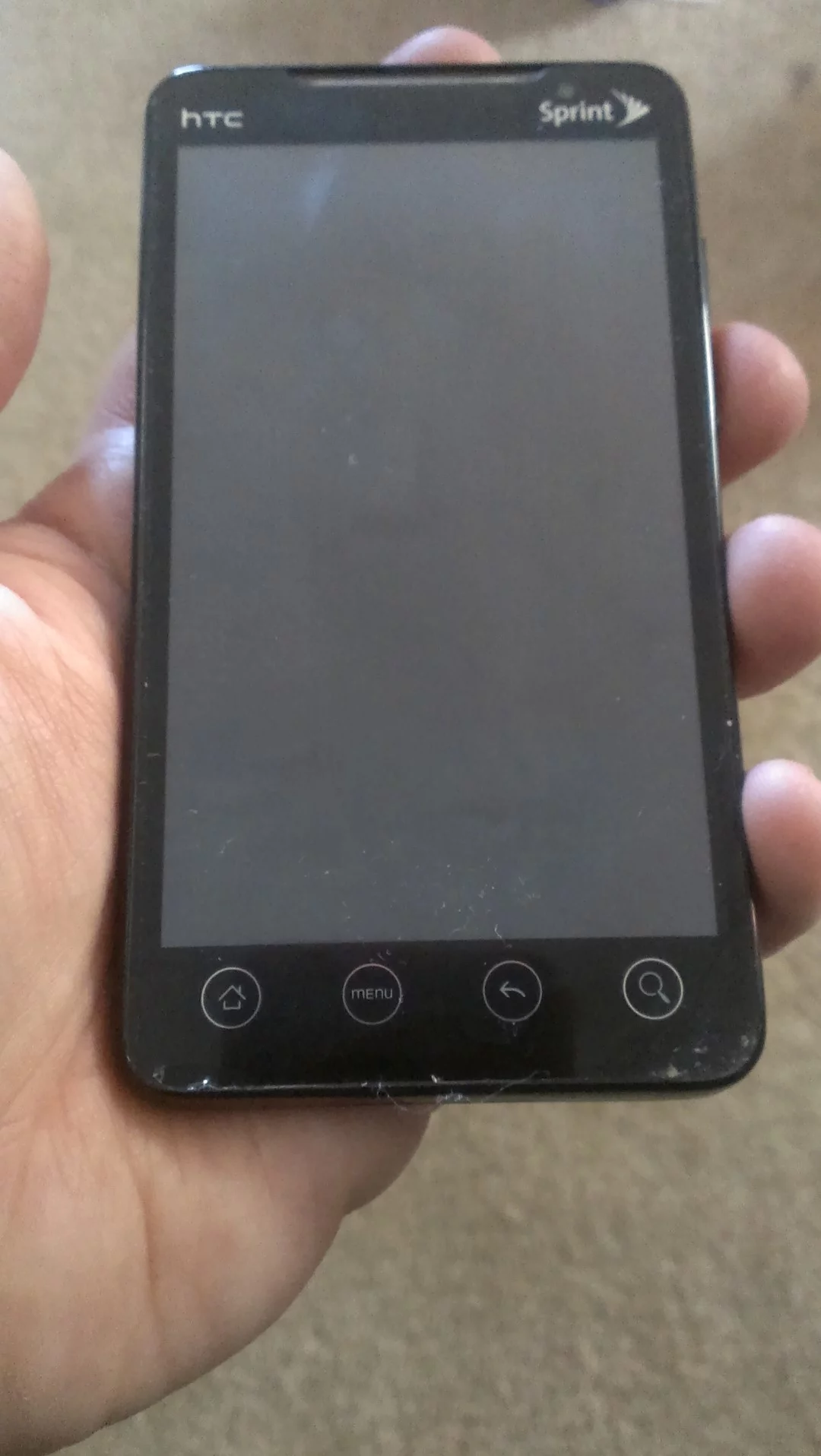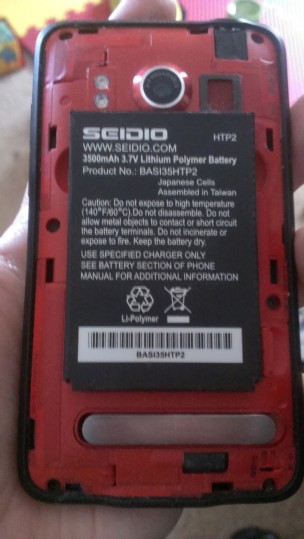HTC EVO 4G end of review
When GoodAndEVO was started back in May of 2010, we had but one purpose: The most all-encompassing review of the smartphone that would revolutionize the industry. While most blogs and review sites spend a week or so with a device, G&E was dedicated for the past four years to providing the most comprehensive review of everything you could do with the device.

While the initial team has changed, and with the HTC EVO 4G coming in at nearly four years old and years past the product’s end of life, it’s finally time to sit down and do this review, finalizing the original mission of GoodAndEVO.
HTC EVO 4G hardware
Battery
The HTC EVO 4G came with an orange-ish/red 1500mAh lithium-ion battery. The average life expectancy of a working one of these was slightly over a year; however, due to several bad batches and end users dunking them, the average life expectancy was less than five months. Fortunately replacements were not terribly expensive, as long as you did not get them at the Sprint store.
Glass
The screen was protected by Gorilla Glass. This protected it slightly, but this was an early version of the glass and it could be fairly easily shattered from the bottom left of the phone. Any cleaning product worked fine on the glass, although many kits were sold by third parties to unsuspecting EVO owners looking for the proper way to clean their screens without damaging them.
Overall the glass was very good and did the job under normal wear and tear, but was not as indestructible as many thought it would be at the outset of the EVO’s introduction.
Software
The EVO 4G shipped with Android Eclair, which is one of the great tragedies of the GoodAndEVO – that I did not get a chance to properly appreciate the majesty that was Eclair, instead only picking up at the Froyo stage due to a particular 1000-year weather event that consumed far too much of my time. As such we’ll skip the particulars and go to the overview:
HTC and Sprint released software updates mostly to keep the phone the flagship (for the first year) and settle potential class action suits against them due to Carrier IQ integration. As such, there was not a lot of change in the launcher, but there was some on the back end to remove spyware and ensure that future revenue generating software, such as Blockbuster’s video service, could not be uninstalled.
Android’s limitations at the time caused issues with the device filling up rather quickly, even if you had a massive external SD card. This is still somewhat the case, but less so in subsequent Android versions.
Capacitive buttons
While they have been all but rendered extinct with Android 4.x, the HTC EVO 4G had four capacitive hardware buttons on the face (home, menu, back, search) that were underneath the Gorilla Glass. These were used in the early days of Android, when the software couldn’t enforce that you provide a way in your application to exit.
Radios
The EVO 4G shipped with a ton of radios, although the main focus was the WiMAX 4G radio, which delivered then-unheard up speeds. Unfortunately, Sprint’s rollout of WiMAX was both slow and never completed, which rendered most of the HTC EVO 4G owners with speeds that mimicked dial-up over 3G and 1x, as Sprint’s network failed from overuse.
WiMAX 4G technology was essentially abandoned in favor of 4G LTE; unfortunately for the EVO 4G, there was no upgrade or software update that could bring it to work with these new towers.
HTC and Sprint legal
HTC, Sprint and Carrier IQ got into hot water that ended up involving former comedian turned senator Al Franken for installing what many considered to be spyware on end-users devices. The EVO 4G was not the only device that had this, but it was where it was discovered.
This predates the mass realization of the NSA wiretapping and spy network, but is several years after the first mentions of the AT&T data tap.
HTC and the EVO 4G root access
For a very long time HTC fought any attempts to root the device with various claims of security issues, carrier issues, etc. Then HTC finally gave in and created a portal at HTCdev.com, which allowed users to root their phones. Rooting allowed HTC EVO 4G users to flash new ROMs and remove bloatware, but the root access across most of the EVO 4G software versions did not allow for things such as updating the radio firmware.
You required S-OFF for that, and nearly four years later HTC is still engaged in a battle to keep S-OFF from becoming available to the general root crowd.
Siblings
Sprint and HTC worked as hard as they could to diminish the EVO name by rebranding other devices an EVO. After they’d cashed that check with the EVO 4G, EVO Shift, EVO Design, EVO 3D, EVO V 4G, EVO 4G+, EVO View 4G, and the EVO 4G LTE, they finished the line.
HTC or carrier support for any of the EVOs that were released later on was minimal, but that’s for another review.
The afterlife
The HTC EVO 4G still enjoys occasional third party ROM updates, although they get more infrequent as the months pass, mostly due to declining audience and fewer sites devoted to showing you how to spend quality time with old equipment as opposed to purchasing new equipment.
Overall
The HTC EVO 4G was released as a world class phone on a carrier that couldn’t keep up with what it was overselling. At the time it was like having a Porsche in a pothole-ridden library parking lot during school zone hours in a sleet storm after a molasses plant had exploded.
It did what it needed to do, the support from the community was great if Sprint and HTC’s wasn’t so hot, and if I were living in 2010 still I would say this was the phone to stand in line for.
If you’re in the market for a new phone and considering the EVO 4G however, I’d suggest you look at phones that were manufactured within the past four as the EVO 4G is pretty old now.



